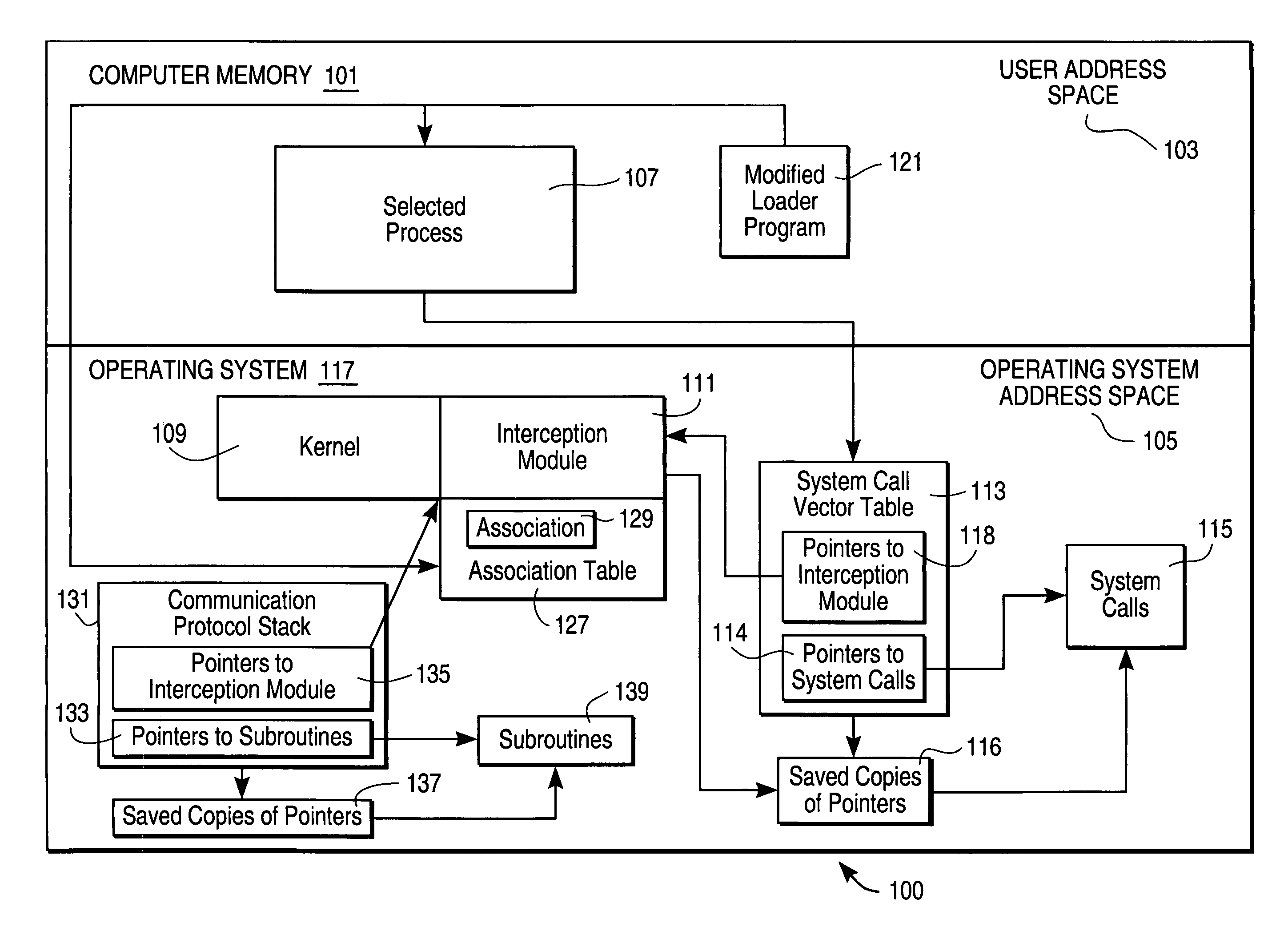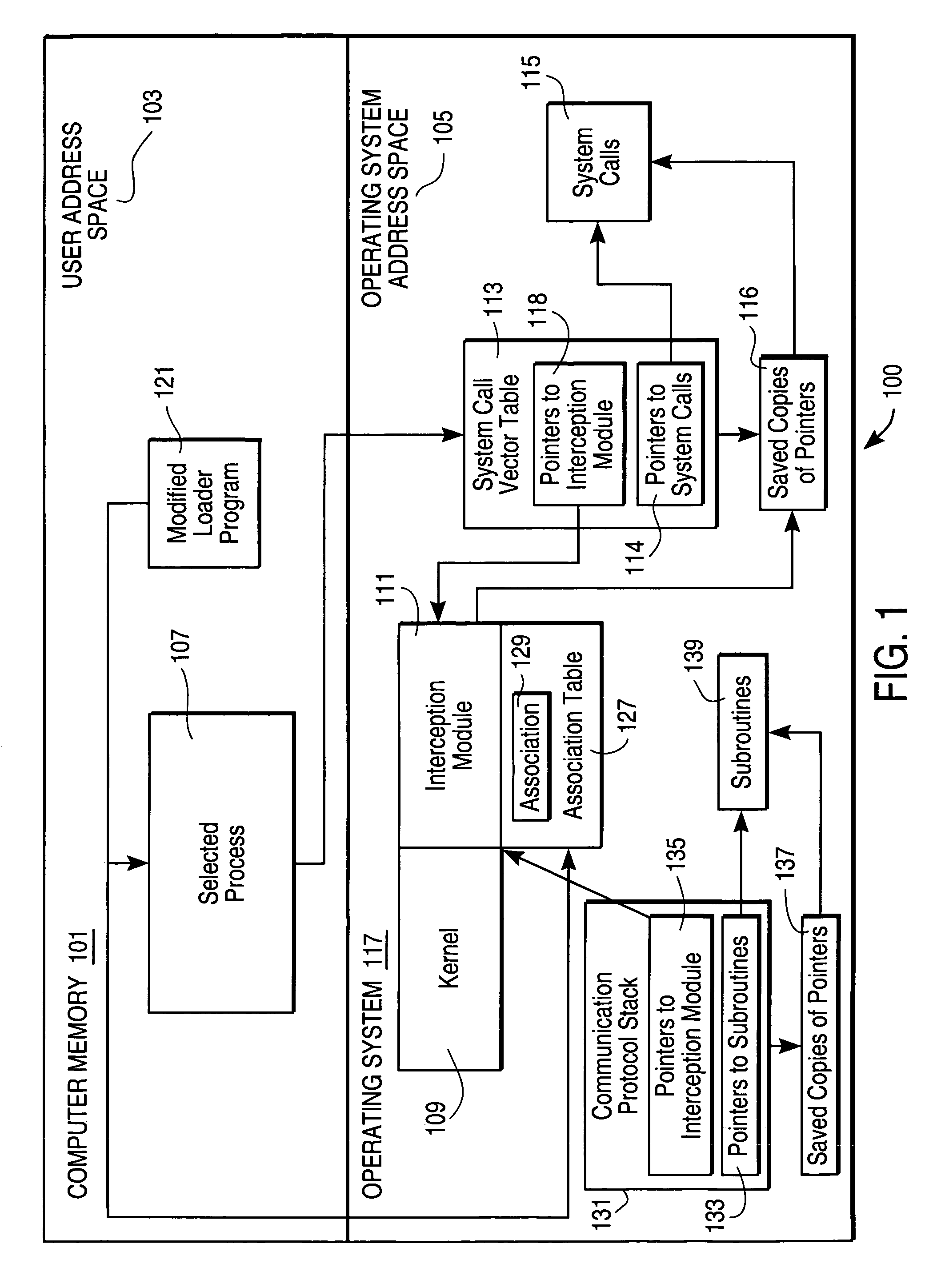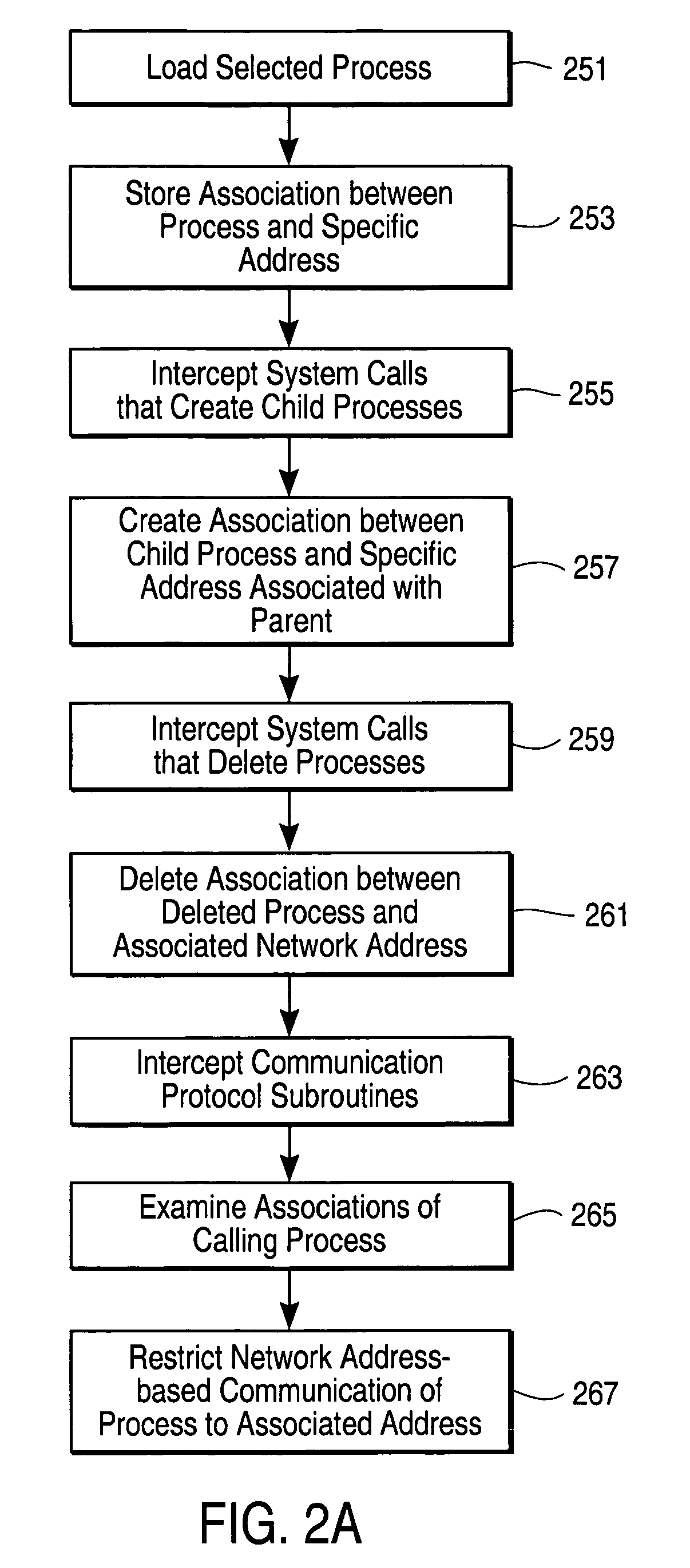Restricting communication of selected processes to a set of specific network addresses
- Summary
- Abstract
- Description
- Claims
- Application Information
AI Technical Summary
Benefits of technology
Problems solved by technology
Method used
Image
Examples
Embodiment Construction
I. System Overview
[0037]FIG. 1 illustrates a system 100 for restricting process communication to a set of specific network addresses according to one embodiment of the present invention. A computer memory 101 includes user address space 103 and operating system address space 105. A process 107 executes in user address space 103. Although FIG. 1 illustrates only a single process 107 executing in user address space 103, it is to be understood that within a given computer memory 101, multiple processes 107 can execute simultaneously. The computer memory 101 is preferably part of an otherwise conventional computer system, including at least one central processing unit, at least one static storage device, and input / output devices.
[0038]An operating system kernel 109 executes in operating system address space 105. Techniques known in the art are utilized to insert an interception module 111 into the operating system 117. In a preferred embodiment, an interception module is dynamically loa...
PUM
 Login to View More
Login to View More Abstract
Description
Claims
Application Information
 Login to View More
Login to View More - R&D
- Intellectual Property
- Life Sciences
- Materials
- Tech Scout
- Unparalleled Data Quality
- Higher Quality Content
- 60% Fewer Hallucinations
Browse by: Latest US Patents, China's latest patents, Technical Efficacy Thesaurus, Application Domain, Technology Topic, Popular Technical Reports.
© 2025 PatSnap. All rights reserved.Legal|Privacy policy|Modern Slavery Act Transparency Statement|Sitemap|About US| Contact US: help@patsnap.com



